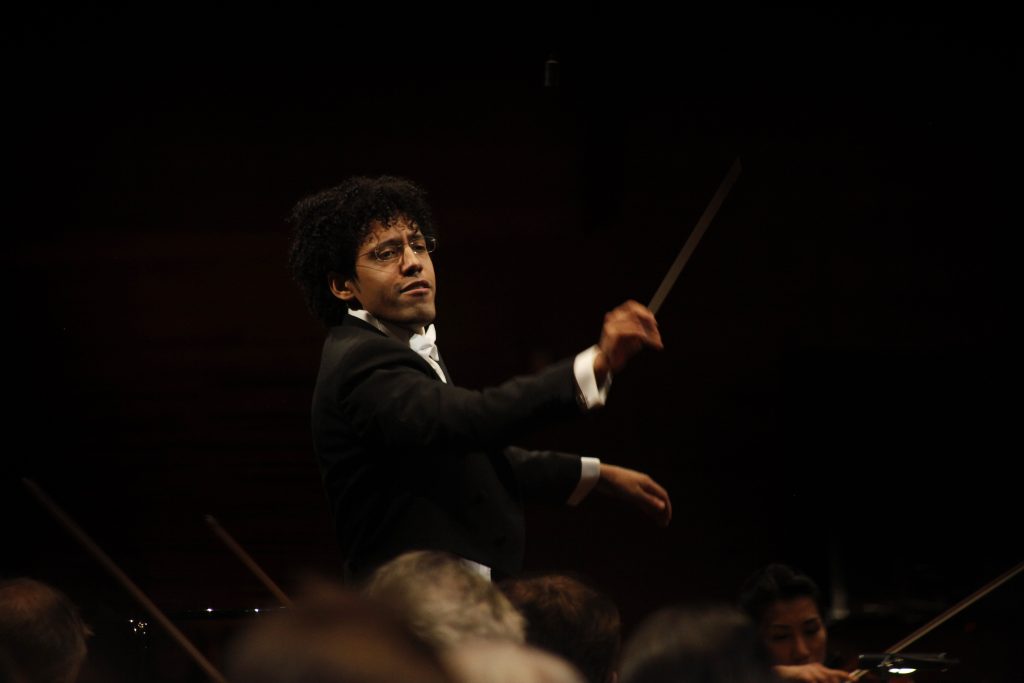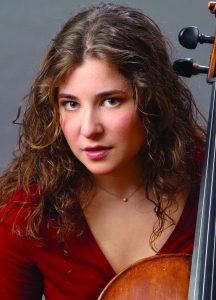Payare and Weilerstein Soar in Tchaikovsky in the San Diego Symphony’s Hearing the Future Festival
Brandishing his new title as Music Director Designate, Rafael Payare opened his weekend blitz of San Diego Symphony performances with a stunning concert Thursday at Copley Symphony Hall, the first performance on the orchestra’s month-long “Hearing the Future” festival. I cannot recall this orchestra sounding as polished, bracing, and compelling as they did in Payare’s program of Richard Strauss, Modest Mussorgsky and Tchaikovsky.

Rafael Payare [photo (c) Bjorne Bertheussen]
Considering the panache of its skyrocket opening theme and its surfeit of voluptuous romantic effusions, “Don Juan”—one of the young composer’s early audience hits—is treated by too many conductors with the nonchalance of a glittering pops offering. Payare, however, took it seriously, revealing Strauss’s deft counterpoint of contrasting ideas and sophisticated orchestration. Even while Principal Oboe Sarah Skuster and Principal Horn Benjamin Jaber entranced the Copley Symphony Hall audience with their ardent, lyrical solos, Payare demanded equally polished articulation from the hushed orchestral accompaniment below them.
During the tenure of former Music Director Jahja Ling, the Strauss tone poems rarely appeared on the orchestra’s programming, although Ling did conduct “Don Quixote” in 2016, and Edo de Waart—just named Principal Guest Conductor of the San Diego Symphony—opened the 2017-2018 season with a glowing account of “Ein Heldenleben.” But Payare’s stellar “Don Juan” awakened in me an appreciation of Richard Strauss I could not have predicted.

Alisa Weilerstein (photo by Christian Steiner)
Tchaikovsky’s admiration for the music of Mozart is amply documented, although his Orchestral Suite No. 4, which he named “Mozartiana,” has never struck me as Mozartian in either style or approach. Tchaikovsky’s “Variations on a Rococo Theme,” however, more clearly expresses the grace and inventive prowess of his beloved Mozart, and cellist Alisa Weilerstein’s bravura account of the solo on Thursday could not have been more radiantly elegant. She impressed with her patrician lyricism and the complete ease with which she dispatched the pyrotechnics assigned to her. Payare’s agile, entirely congruent interpretation of the score buoyed the cellist with warm, undulant sonorities that allowed the requisite first chair soloists to engage with Weilerstein as equals. Among the fine solo contributions from the orchestra, Principal Flute Rose Lombardo’s sparkling descant over the cellist’s cadenza stood out. Under Payare’s assured direction, the closing presto fused orchestra and soloist rapturously.
I confess that I never tire of “Pictures from an Exhibition,” either in its original piano version or in Maurice Ravel’s scintillating orchestral transcription, with which Payare concluded his program. The young Venezuelan conductor succinctly captured the array of clever characterizations the composer depicts, allowing Ravel’s orchestral genius to work its magic. I sense that Payare favors understatement that unmistakably communicates power in reserve, strength under watchful control. This was confirmed by his burnished yet rewardingly expansive account of Mussorgsky’s concluding movement “The Great Gate of Kiev.” Some conductors go for broke with this grand finale, urging their modest brass sections to pretend they are the Chicago Symphony. Payare has revealed ample vivacity and enthusiasm on the podium, but swagger and pretense do not appear to be part of his repertory.
Since the Mussorgsky offers so many solo opportunities, let me commend guest saxophone Mark Shannon’s shimmering lines in “The Old Castle” and Principal Trombone Kyle Covington’s touching, lyrical solo on the rarely heard euphonium in the “Bydlo” movement. The strings produced commanding, soaring unison volleys in “Samuel Goldenberg and Schmuyle,” and Acting Principal Trumpet Christopher Smith acquitted himself well on the treacherously high solo iterations that end that movement. I wish that his unaccompanied solo at the outset of “Pictures” had displayed more allure and confidence. It made me grieve again at the loss of former Principal Trumpet Micah Wilkinson, who was understandably lured away last season to a significantly more lucrative first-chair post with the Pittsburgh Symphony. There was very little disappointment on his watch.
Mozart’s Overture to his opera Don Giovanni opened this concert and gave a thematic tie to Strauss’s “Don Juan” tone poem. I appreciated Payare’s mysterious cast to the overture’s opening, and overall his interpretation proved more dramma than giocoso.
This concert was presented by the San Diego Symphony at the Jacobs Music Center’ Copley Symphony Hall in downtown San Diego on Thursday, January 10, 2019. Rafael Payare and Alisa Weilerstein will give a substantially different program in the same venue January, 11, 12, and 13. The “Hearing the Future” festival continues through January 26, 2019, in various San Diego venues.


